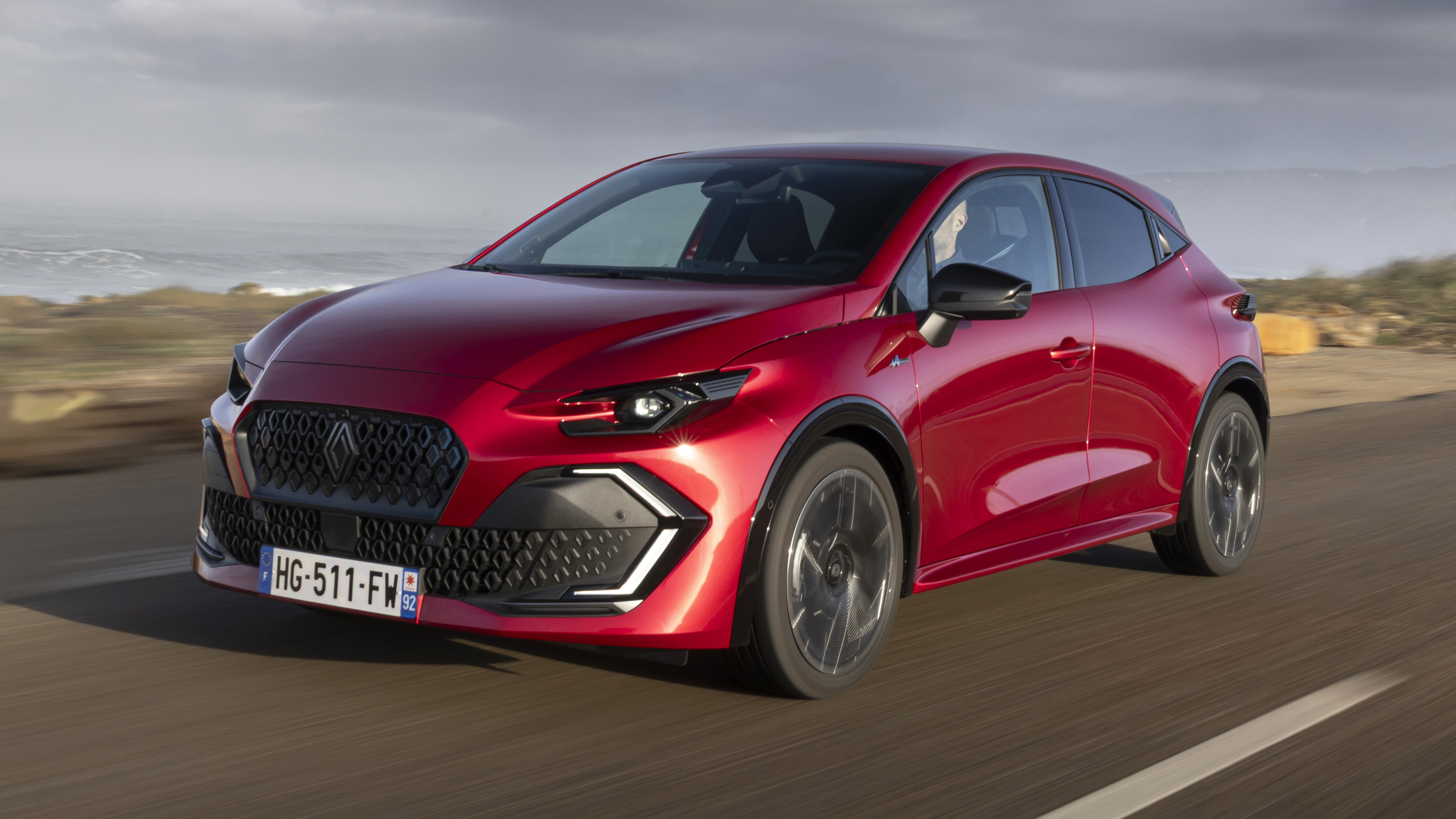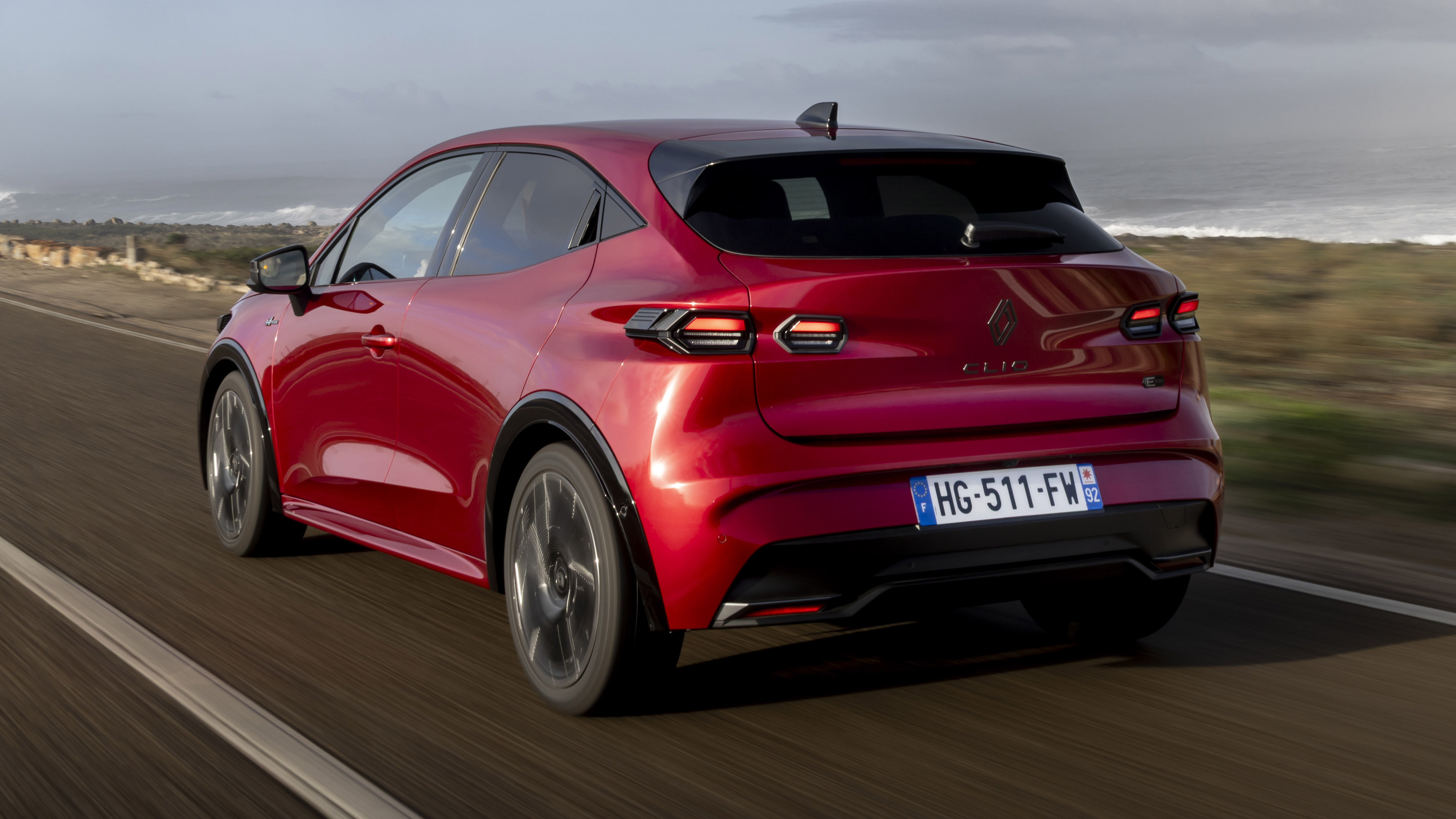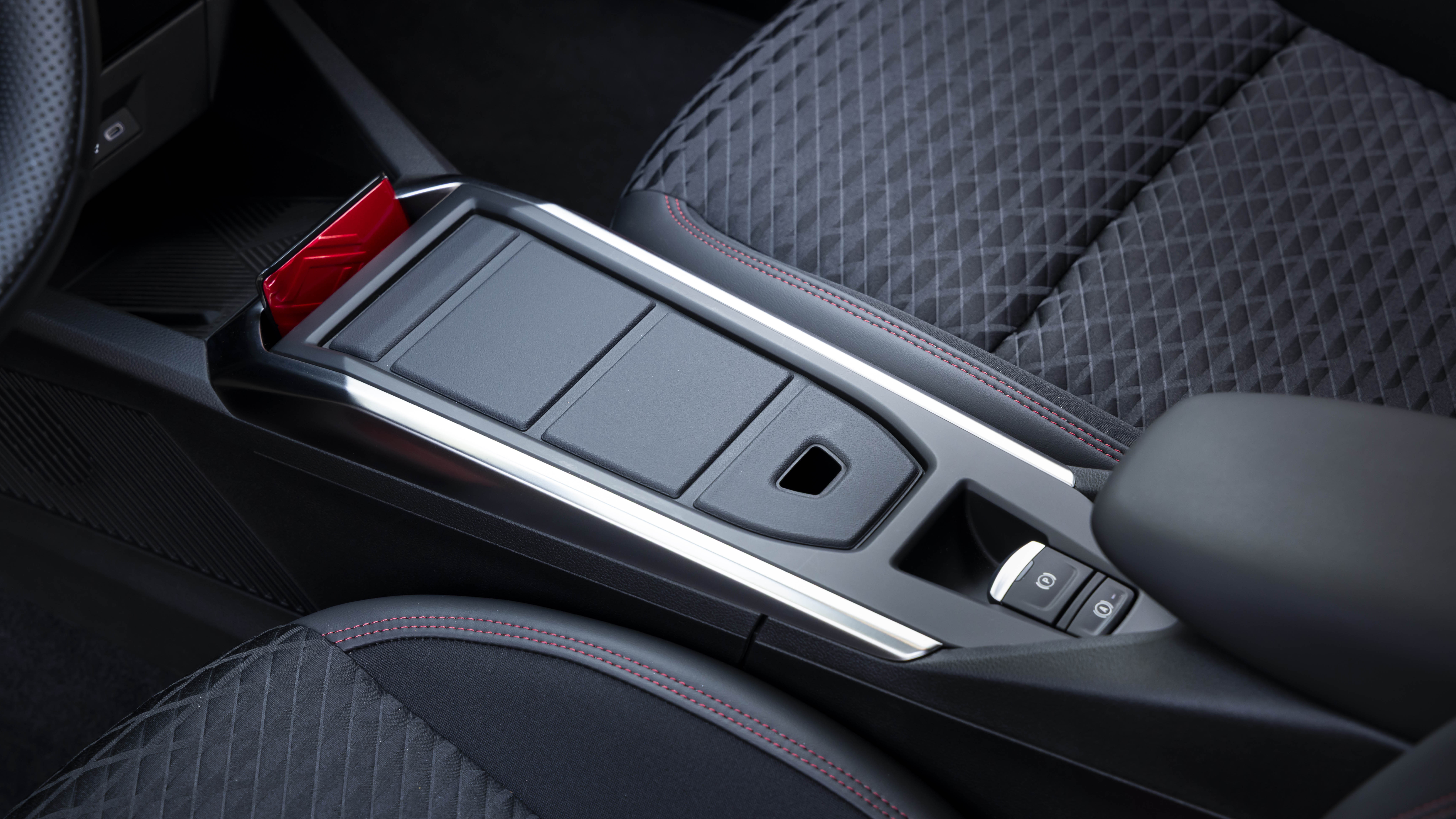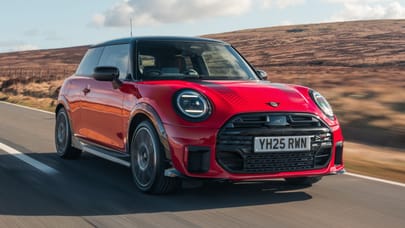
Good stuff
Easy to operate. Efficient hybrid setup. Petrol/manual option still available
Bad stuff
Clio no longer looks cute or chic. Right-hand drive taking an age to arrive
Overview
What is it?
Believe it or not, it’s the all-new Renault Clio. Yep, clearly Renault’s design team decided that its best-selling car ever was done being cute, friendly and a little bit chic. It’s now got the face of an angry chipmunk, with a droopy bonnet and a double-decker, logo-obsessed front grille.
There are sunken lights front and rear, and while we’re fans of the hidden rear door handles and swooping roofline, the rear three-quarter view does make it look a whole lot like the new Lancia Ypsilon. Only that’s a much better-looking car overall.
Harsh. How else is it different to the previous Clio?
Bit strong perhaps, but the retrotastic 4, 5 and Twingo are all such huge hits, so to see Renault swing and miss with the looks of the Clio is a shame. It was never going to be a retro design because those are being saved for the EV platforms where the wheels can be pushed right into the corners of the car, but the previous fifth generation Clio was a stylish little thing. This isn’t so much.
Still, we should praise Renault for even pressing on with a new generation of Clio. The supermini class isn’t what it once was, and with Ford having killed off the Fiesta there’s room for a new sheriff in town.
For this generation, the Clio has grown by 67mm in length, 39mm in width and 11mm in height. We’re told that means more space for rear-seat passengers and better aero too, with the CdA dropping from 0.32 on the previous Clio to 0.30 on this one. You also get larger 18in wheels, new ‘Absolute Red’ or ‘Absolute Green’ paint options, and up to 29 different driving aids depending on the trim level.
What engines can I have?
Base spec in the UK is a 1.2-litre three-cylinder petrol engine that makes 113bhp and 140lb ft of torque. And get this, it’s paired with a proper six-speed manual gearbox. Well played, Renault.
In Europe you’ll be able to have that three-cylinder with a six-speed dual-clutch auto, but on our shores if you want just the two pedals then you’ll need to step up to the hybrid powertrain. That’s an updated version of the previous Clio’s hybrid system, and uses a new 1.8-litre four-pot engine, a larger 1.4kWh battery, two electric motors and Renault’s “intelligent multimode clutchless dogbox”. Power is up to 158bhp.
What’s it like on the move?
Having driven the hybrid we can report that, although it may look complex on paper, it’s actually rather simple to live with. It doesn’t require any charging and doesn’t even need you to change drive modes – it’ll do that automatically.
The Clio is slightly firmer riding than the electric R5 but there’s some decent feel to the steering. Low speed manoeuvrability is good, but we did struggle with the column-mounted drive selector that doesn’t always allow for a quick switch from drive to reverse. Click on through to the driving tab of this review for more detail.
Is the interior just full of screens?
Seen the inside of the R4 and R5? The Clio follows the same path, with a dual 10.1in screen setup running Google built-in. That means you get Google Maps for navigation and a Google voice assistant too. It’s all stuff that’s proven and works well, and the screens are responsive enough.
You’ve also got plenty of proper buttons, including physical controls on the wheel, a separate row of toggle switches for climate, and a single button to turn off all the annoying active safety systems. Hurrah!
What’s this about it not being available until 2027?
Ah, yes. Here’s the bad news. This sixth-gen Clio won’t arrive in the UK until 2027 at the earliest. Renault says that uncertainty over the UK’s ban on internal combustion engines is the reason why, but surely it could have swapped the steering wheel over slightly quicker. Heck, it’ll be on sale in France from January 2026.
How much will it cost?
Because we’re so far away from being able to buy one on our shores, there’s no word on pricing just yet. However, we do know that it won’t be too much more than the current generation, which starts at £18,995 for the petrol/manual, with the hybrid kicking off at £21,895. Add a grand or two on to those figures and that’s probably about right.
What's the verdict?
With almost 17 million sold since its launch in 1990, the Clio isn’t just Renault’s best-selling model ever, but the best-selling French car of all time if you include all five previous generations. Bit of a surprise to see such a radical redesign for this generation then, and we’re not sure we can get on board with the looks.
Still, underneath the Clio is still a proper supermini, and we’re delighted that it’s back for another generation. Expect to see the petrol/manual combo adorned with learner plates as soon as it arrives on our shores. The hybrid powertrain is also supremely simple to own and operate, and it allows for strong economy figures too.
The Rivals
Trending this week
- Car Review
Ferrari Amalfi
- Long Term Review
Is the Suzuki Swift still the best small car money can buy?









